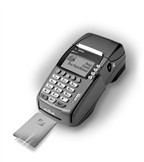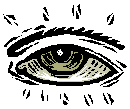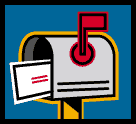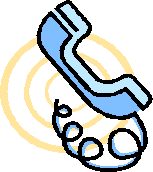DOH Medicaid Update June 2003 Vol.18, No.6
Office of Medicaid Management
DOH Medicaid Update
June 2003 Vol.18, No.6
State of New York
George E. Pataki, Governor
Department of Health
Antonia C. Novello, M.D., M.P.H., Dr. P.H.
Commissioner
Medicaid Update
is a monthly publication of the
New York State Department of Health,
Office of Medicaid Management,
14th Floor, Room 1466,
Corning Tower, Albany,
New York 12237
Table of Contents
Disease Management Articles For 2002
Hospitals Eliminate Neonate Inpatient Discharge Code
Submit Claims via ePACES
New POS Verifone Available
Transportation News
Seeking Approval for Orthodontic Services in Eighteen Counties
Ask The Pharmacist
Pharmacy Billing for OTC Claritin: Use NDC or UPC
Enteral Therapy: Calculation of Caloric Units
Prescribers and Dispensers: Answers Regarding Antihistamines
Patient Educational Tools: Diabetes
Smoking and Women With Diabetes
All Providers: Changing Your Address?
New Managed Care Special Needs Plan in NYC
HIPAA Required Recipient Privacy Notice Has Been Mailed
Billing for Newborns In Managed Care Plans
REVISED FEE SCHEDULES FOR SELECT PROVIDERS
During June 2003, revised Medicaid fee schedules will be sent to enrolled providers in the following categories:
- Hearing Aid/Audiology
- Midwife and Nurse Practitioner
- Ophthalmic
- Ordered Ambulatory
- Physician
- Podiatry Services
- Independent Rehabilitation Services
(Speech-Language Pathologist, Physical Therapist, and Occupational Therapist).
Coding and fee changes will be effective for dates of service on and after July 1, 2003. New codes are in bold type. Please review the revised fee schedule carefully and insert it into your MMIS Provider Manual. Previous copies of the fee schedule should be kept on hand for billing purposes for periods of service prior to July 1, 2003.
If you do not receive a revised fee schedule (Provider Manual update) by June 20, 2003, please contact Computer Sciences Corporation's Provider Relations at:
| Midwife, Nurse Practitioner, Ophthalmic, Physician, Podiatry Services, Rehabilitation Services |
Practitioner Services (800) 522-5518 (518) 447-9860 |
| Ordered Ambulatory | Institutional Services (800) 522-1892 (518) 447-9810 |
| Hearing Aid/Audiology | Professional Services (800) 522-5535 (518) 447-9830 |
Questions regarding coding changes should be directed to the Bureau of Medical Review and Payment at (518) 474-8161.
LIST OF DISEASE MANAGEMENT ARTICLES FOR 2002
Return to Table of Contents
Several Disease Management articles were printed during 2002 and made available for you to use as a resource for you and your patients. These articles can be located:
- on the Department of Health website at: http://www.health.state.ny.us/health_care/medicaid/index.htm
- or by request, by e-mailing your address to:MedicaidUpdate@health.state.ny.us
ARTICLE MONTH
- Asthma: The Use of Spirometry for Diagnosis & Management January
- Diabetes: Women Can Reduce Their Risk January
- Diabetes Management: Intensive Therapy & Team Approach February
- Asthma: Success with St. John's Riverside Hospital February
- Student Athletes & Exercise-Induced Asthma March
- Diabetes: High Hospitalization Rates in Children March
- Summary of Guidelines: Diagnosis & Management of Asthma April
- Aspirin Therapy in Diabetes April
- The Diabetes Resource Coalition of Long Island May
- Hepatitis C: Treatment Options and Considerations May
- Free Asthma: Materials June
- Reduction of Incidence of Type 2 Diabetes July
- Asthma Triggers & Assessment Questions July
- Diabetes Conditions Recognized August
- National Asthma Guidelines Released August
- Free Diabetes Foot Screening Materials September
- Regional Asthma Coalitions in NYS September
- List of Coalitions for Diabetes October
- Asthma Action Plan is Recommended November
- Initiative for Children with Diabetes November
- Key Indicators for Diagnosis of Asthma November
- Diabetes Poor Health Literacy & Complications December
- Guidelines for the Diagnosis & Management of Asthma December
NOTICE TO HOSPITALS
ELIMINATION OF NEONATE DISCHARGE STATUS CODE
Return to Table of Contents
The implementation of the Health Insurance Portability and Accountability Act (HIPAA) requires changes to current billing practices. Effective October 2003, Medicaid cannot accept an inpatient claim using Discharge Status Code 10 Neonate Discharged for Weight Gain. This code was developed to allow a full DRG payment to the hospital that provided intensive medical services before the neonate was returned to the birth hospital.
Beginning with discharge date October 1, 2003, hospitals that are returning neonates to the community hospital of birth for weight gain should use Discharge Status Code 01.
Questions should be addressed to the Rate-Based Provider Unit, Bureau of Medical Review and Payment, Office of Medicaid Management at (518) 474-8161.
TREMENDOUS CHANGE ON THE HORIZON
SUBMIT CLAIMS VIA ePACES!
Return to Table of Contents
Computer Sciences Corporation, on behalf of the New York State Department of Health, is developing the Electronic Provider Assisted Claim Entry System (ePACES). ePACES is a web-based application that allows providers to create and submit HIPAA-compliant Claims (Professional, Institutional, and Dental). ePACES also allows providers to submit eligibility, claim status, service authorization, and dispensing validation system transaction inquiries and receive back the associated response transaction. ePACES will combine some of the functionalities of the current Medicaid Field Eligibility software and PACES applications.
- Providers will need a personal computer, browser software (minimum version of Netscape 4.7 or Microsoft Internet Explorer 4.01), and access to the Internet to take advantage of the ePACES functionality.
- ePACES is capable of running under most PC operating system environments, including Microsoft, Macintosh, or Linux.
- You will not have to install any custom software-- the most current version of the ePACES application will be delivered to your computer each time you access it over the Internet.
The ePACES system is designed as an easy-to-use system through user-friendly navigation, data entry fields and pop-up boxes that encourage both speed and accuracy. This includes comprehensive on-line help documentation. Persistent navigational menus where the items are logically divided into functional groupings allow you to quickly and easily move about the system. Entering claim information is quick and simple with the addition of context-specific pop-up boxes, which will display code values specific to the field in question. This reduces the opportunity for incorrect codes being entered when you are unsure of the actual value. Certain data integrity and simple field validation is done as you enter the claim to ensure that the highest possible percentage of claims are valid upon completion.
Each function and page within the ePACES application is supported in the on-line help documentation, which is easily accessed via the link at the top of each page. The help system will open a separate window to allow you to reference the help text while still looking at the page in question. The content available in the on-line help is broken down into main topics with individual pages within each topic. You will be brought to the main page of content relating to the page from which the help tool was accessed; however, you may also navigate to any page within the help system from that point to find the information you need.
Due to the sensitive and private information being served by ePACES, certain processes will be implemented to ensure the integrity of this system. Access to ePACES will be restricted, and only users who have been given user IDs and passwords by the ePACES system administrator will be allowed access.
By combining the latest technology and user-friendly web-browser interface, ePACES will allow you to enter and complete HIPAA-compliant transactions with ease. ePACES will be available in September of this year! Watch for future Medicaid Update articles and direct mailings that will contain instructions on how you may obtain your user ID and password, and access ePACES.
NEW POS DEVICE (VERIFONE OMNI 3750) IS NOW AVAILABLE
Return to Table of Contents

The new HIPAA capable VeriFone Omni 3750 POS (Point Of Service) device that is replacing the TRANZ 330 is now available to order. Due to the new HIPAA regulations, the VeriFone TRANZ 330 POS device will need to be replaced, or you will be required to switch to an alternate access method to interface with the NYS Medicaid Systems. Your new POS device will need to be installed and working prior to the October 16, 2003 HIPAA deadline. Failure to do so could result in interruption to your access.
About the OMNI 3750 (Pricing/Features)
The Omni 3750 has been priced at $817 (includes shipping and handling) plus tax and will include the following features:
- Five year warranty on hardware failures
- Expedited replacement service (overnight replacement of damaged units)
- Integrated printer
- Faster modem for improved transmission speeds
- Easier to use ATM keys
Please note! As an alternative to using the POS device, the Medicaid eligibility field software replacement program, called ePACES, will be available in September of this year.ePACES will be available to providers at no cost. Please see this month's article on ePACES for more information on the new ePACES application.
Ordering Information
To order your Omni 3750 device, simply fill out the order form that was recently mailed to you based on the options below, and mail it with your payment to the address indicated on the form. You should order now to avoid any delays due to a potential last-minute surge of orders prior to the October 16th timeframe. Keep in mind that your new Omni 3750 can be used to access eMedNY just like the TRANZ 330, until such time as you receive instructions to download the new HIPAA software code.
Other Options
- Mail Notification: Letters have been mailed to each provider submitting transactions via a POS device. That letter contained instructions and forms for ordering the new device. If you are a POS user and have not received a letter, please call the Provider Services POS Information Hotline listed below.
- www.eMedNY.org web site will also contain information on the ordering process, forms, user supplemental guide and a list of frequently asked questions to help you through this transition. This website will provide timely updates and allow you to download various forms and information as needed.
- Provider Services POS Information Hotline: A special option on the Provider Services number (800) 343-9000, (Option 4), will be available for ordering information, forms, and general questions about the new Omni 3750. Information about alternate access methods is also available on this line. Option 4 will be available Monday through Friday between 9:00 AM and 5:00 PM.
Transportation News!
Return to Table of Contents

Background:
In 1965, a cooperative venture between the federal and state governments was funded to assist states in the provision of medical care for eligible needy individuals. The program, known as Medicaid, is part of Title XIX of the federal Social Security Act. The Medicaid program is the largest program providing medical and health-related services to America's neediest population.
The federal government provides broad national guidelines that allow each state to administer its own program, establish its own eligibility standards, determine the type, amount, duration, and scope of services, and set the rates of payment for services.
At the inception of the Medicaid program, the federal government mandated states to assure the availability of transportation services. This requirement is based on the recognition that unless needy individuals can actually get to and from providers of services, the entire Medicaid program is inhibited at the start.
New York will provide transportation using the appropriate mode, when transportation assistance is required, to assure medically necessary care and services are received. For all non-emergency transportation, prior authorization must be obtained prior to payment being made.
__________________________________________
Ambulance Transportation:
Updated Definition of Advanced Life Support Service

Due to the advances in the provision of ambulance services, the definition of Advanced Life Support (ALS) service has been expanded, as follows:
ALS services are those ambulance services in which the treatment provided is invasive to the patient, inclusive and above the level of care provided by a NYS Certified EMT. Such treatment includes:
- The initiation of intravenous (IV) fluids.
- Cardiac monitoring (EKG).
- Intubation/insertion of an airway tube.
- Manual defibrillation and/or electric pacing of the patient's heart.
- Administration of drugs, which includes oral and all other types of medications that are stored on an ALS ambulance.
What Is A Trip Ticket?

Mandated Information Is Required For Ambulette and Day Program Providers
Every Medicaid provider is expected to maintain a record of the service rendered to a Medicaid recipient. Ambulance providers are required by the Department of Health to complete a formal record for each person who is treated by the ambulance service. Other providers of service (ambulette, taxi, livery, and day program) have developed informal records which, over the years, have been referred to as a "trip ticket."
Currently, only ambulette providers have been mandated by the Department to record specific information on these trip tickets. This mandate now applies to all day program providers. Documentation must include:
- the recipient's name and Medicaid identification number;
- the origination of the trip;
- the destination of the trip;
- the date and time of service; and,
- the name of the driver transporting the recipient.
__________________________________________

New York City Day Program Providers:
How To Order The Correct Transportation Service
Recipients traveling to a day program, such as a mental health clinic or an adult day health care program, can be transported more efficiently than recipients who travel to episodic medical care and treatment. Due to the nature of the same group of individuals traveling to and from the same program site on a regularly recurring basis, New York City (NYC) has established group ride reimbursement.
If you operate a day program, you should order your Medicaid transports through the NYC Human Resources Administration. Please contact Ms. Anaceta Kruger at (212) 630-1804 for information.
For ambulette or livery transports to episodic medical care and services, you should place your order by mailing the "Medicaid Management Information System Transportation Prior Approval" form (DSS-3897) to Computer Sciences Corporation, P.O. Box 4444, Albany, NY, 12204-0444, or by calling (800) 243-7842.
__________________________________________

New York City Orderers of Transportation:
When To Order Mileage
NYC has established fixed payment amounts to reimburse trips that occur within the five boroughs of New York City. Mileage should not be ordered for any transports within the five boroughs of New York City.
For long distance trips that occur outside the five boroughs, NYC does allow for mileage reimbursement in addition to the fixed payment amounts.
NYC Medicaid recipients are generally expected to obtain their medical care and services within five miles from their residence. This five-mile geographic area is considered the common medical marketing area (CMMA). Transportation can be ordered for trips greater than five miles from the recipient's residence, when the medical care or service is unavailable within the CMMA.
The difficulty orderers of transportation face is when a recipient resides in a borough contiguous with Westchester or Nassau County, and the recipient is traveling into the other county for medical care and service. In these situations, mileage can be ordered when the transport is over five miles from the recipient's residence. If the one-way trip is greater than five miles, the mileage begins at the NYC/other county border (not the recipient's residence). For example, if a recipient travels ten miles from Queens to Nassau County, and two miles are traveled in Queens and eight additional miles are traveled in Nassau County, then the one-way mileage is eight miles.
Transports to the medical care or service within five miles of the recipient's residence should never receive a mileage add-on.
Please note: Some NYC recipients reside in counties outside NYC. For these recipients who reside outside NYC and travel outside NYC, the rule for ordering mileage reimbursement is the same as that which applies to all other recipients of that county.
Questions regarding this article can be addressed to the Bureau of Policy and Program Guidance at (518) 474-9219.
NEW PRIOR APPROVAL REQUIREMENT FOR
ORTHODONTIC SERVICES IN EIGHTEEN COUNTIES
Return to Table of Contents
Broome Cayuga Chenango
Cortland Greene Herkimer
Jefferson Lewis Montgomery
Tioga Tompkins Washington
Niagara Onondaga Oswego
Otsego Rensselaer St. Lawrence
Effective June 1, 2003, orthodontic cases for Medicaid-eligible recipients up to 21 years of age who are the financial responsibility of any of the above-listed counties will require review and prior approval by the Albany Dental Prior Approval Unit of the New York State Department of Health . With the issuance of prior approval, any Medicaid enrolled, board qualified or certified orthodontist participating in the Medicaid program with specialty designator 801 or any clinic facility with specialty designator 912, will be able to provide care to recipients eligible for Orthodontic benefits under the program.
Medicaid approval will only be issued for cases presenting with severe handicapping malocclusions. The following procedure codes will now be subject to the prior approval process for recipients from the above counties:
- D8070 (Comprehensive orthodontic treatment of the transitional dentition)
- D8080 (Comprehensive orthodontic treatment of the adolescent dentition)
- D8090 (Comprehensive orthodontic treatment of the adult dentition-up to age 21)
- D8670 (Periodic orthodontic treatment visit - as part of contract)
- D8680 (Orthodontic retention)
The new prior approval review process does not apply to Medicaid patients who have an existing treatment authorization that was previously issued through the Physically Handicapped Children's Program (PHCP). For such patients, you may complete the currently authorized treatment year after which you will be required to submit a new treatment request for prior approval evaluation. For continuing cases, attach a copy of the previous year's PHCP authorization with the prior approval request.
Prior Approval request forms completed pursuant to instructions contained in a recent letter to orthodontists and in the MMIS Dental Provider Manual, along with appropriate diagnostic aids and information (i.e., diagnostic radiographs AND intraoral photographs), should be sent to:
New York State Department of Health
Bureau of Medical Review and Payment
Dental Prior Approval Unit
150 Broadway, Suite 6E
Albany, New York 12240-2726
Orthodontists wishing to obtain the appropriate specialty designation should submit their requests to:
New York State Department of Health
Office of Medicaid Management
Provider Enrollment Unit
150 Broadway, Suite 6E
Albany, New York 12240-2726
Prior authorization for children covered by the Department of Health's Physically Handicapped Children's Program (PHCP) Dental Rehabilitation Program in these same 18 counties will change as of June 1, 2003, as well. They will no longer have to attend screening clinics. Prior authorization requests for PHCP coverage will be transferred from the screening clinics to the Bureau of Dental Health in Albany. Prior authorization requests for PHCP-enrolled non-Medicaid children and required documentation (DOH-4268, treatment plan, photographs of various views and of models, and, radiographs including panorex and cephlometric) should be submitted to the following address:
New York State Department of Health
Bureau of Dental Health
Room 542, Corning Tower ESP
Albany, New York 12237-0619
General dental conditions,including correction of cavities, prophylaxis and extractions, should be addressed by a general dentist prior to any request for orthodontics being submitted, whether for Medicaid or PHCP children.
Any questions regarding this new Medicaid prior approval requirement should be directed to the Bureau of Medical Review and Payment, Dental Prior Approval Unit, at (800) 342-3005, option 3.
Any questions regarding the new PHCP prior authorization requirement should be directed to the Bureau of Dental Health at (518) 474-1961.

Ask the
Pharmacist...
Return to Table of Contents
In response to some frequently asked questions regarding eligibility verification, we have included in this segment of Ask the Pharmacist what to do when the nursing home indicator appears. We hope this information is useful to you and your staff.
Occasionally, when billing a prescription for a recipient, the nursing home indicator will appear indicating that the recipient is a resident of a nursing home. Usually, you would not bill for this prescription. However, the recipient is right there in the store, asking for the prescription, and they no longer reside in a nursing home. What should you do?
The recipient will have to call their local Department of Social Services and ask them to correct their eligibility file. Once their file status is corrected, prescriptions will be able to be billed as allowed.
Questions can be directed to the Pharmacy and Policy Operations Unit at (518) 486-3209.
PHARMACY BILLING FOR
OVER-THE-COUNTER CLARITIN
Return to Table of Contents
Representatives of Schering Corporation have informed the Department that OTC Claritin packaging may be labeled with a UPC number, rather than or in addition to an NDC number. The UPC begins with 41100 while the NDC begins with 11523. As you know, the NDC is required for submitting a bill to the Medicaid program.
To alleviate confusion, the Department has temporarily modified the list of Medicaid reimbursable drugs to accept either the UPC or the NDC number for OTC Claritin. This is expected to be a short-term measure until OTC packages of Claritin clearly identify the NDC number. At that time, billing by NDC only will resume.
The following table lists the affected Claritin products which can be billed using either the UPC or the NDC number:
| NDC | Product | UPC |
| 11523-7160-01 | Claritin Allergy 24 hr 10 mg Tablet 5's | 41100-0080-22 |
| 11523-7160-02 | Claritin Allergy 24 hr 10 mg Tablet 10's | 41100-0080-16 |
| 11523-7160-03 | Claritin Allergy 24 hr 20 mg Tablet 10's | 41100-0080-18 |
| 11523-7157-01 | Claritin Allergy 24 hr RediTabs 4ct Tablets | 41100-0060-87 |
| 11523-7157-02 | Claritin Allergy 24 hr RediTabs 10ct Tablets | 41100-0060-66 |
| 11523-7162-01 | Claritin-D Allergy/Congestion 12 hr Tablet 10's | 41100-0802-08 |
| 11523-7161-01 | Claritin-D Allergy/Congestion 24 hr Tablet 5's | 41100-0080-49 |
| 11523-7161-02 | Claritin-D Allergy/Congestion 24 hr Tablet 10's | 41100-0080-43 |
| 11523-7163-01 | Children's Claritin 4oz Syrup | 41100-0080-35 |
Questions can be directed to the Pharmacy and Policy Operations Unit at (518) 486-3209.
PRESCRIBERS OF ENTERAL NUTRITIONAL THERAPY...
...How many enteral calories per day does your patient need?
| PRODUCT | CODE | SIZE | CALORIES | CALORIC UNITS |
| Boost | B4150 | 237ml | 240 | 2.40 |
| Boost Plus | B4152 | 237ml | 360 | 3.60 |
| Ensure | B4150 | 237ml | 250 | 2.50 |
| Ensure Plus | B4152 | 237ml | 355 | 3.55 |
| Glucerna | B4154 | 237ml | 237 | 2.37 |
| Immunocal | B4155 | 10g | 40 | 0.40 |
| Impact | B4154 | 250ml | 250 | 2.50 |
| Juven | B4155 | 23g | 90 | 0.90 |
| Kindercal | B4150 | 237ml | 250 | 2.50 |
| Magnacal Renal | B4154 | 237ml | 474 | 4.74 |
| Nepro | B4154 | 237ml | 474 | 4.74 |
| NuBasics | B4150 | 250ml | 250 | 2.50 |
| NuBasics Plus | B4152 | 250ml | 375 | 3.75 |
| Nutren Junior | B4150 | 250ml | 250 | 2.50 |
| Pediasure | B4150 | 237ml | 237 | 2.37 |
| ProMod Powder | B4155 | 275ml | 1148 | 11.48 |
| ProSobee RTU | B4151 | 32oz | 640 | 6.40 |
| Resource | B4150 | 237ml | 251 | 2.51 |
| Resource for Kids | B4150 | 237ml | 237 | 2.37 |
When a patient's caloric and dietary nutrients from food cannot be absorbed or metabolized due to a documented diagnostic condition, a nutritional assessment can determine daily portion of caloric needs to be met by an enteral formula. (Please note: enteral formula is not covered as a convenient food substitute.)
When requesting prior authorization from Medicaid, prescribers must enter the number of daily enteral formula calories prescribed. Do not enter the regular food portion of daily caloric requirement, or the number of cans, packets, or cases.
In conformance with national coding standards, the dispenser of enteral formula is paid based on caloric units. The prior authorization system will calculate and report to the dispenser the number of caloric units authorized based on prescriber input of daily enteral formula calories. (The caloric unit calculation: number of calories per can divided by 100 equals the number of caloric units per can.)
At right is a list of some commonly prescribed enteral formulas with the number of calories and caloric units listed per can or packet. If the authorization contains the incorrect amount of daily enteral formula calories (and thus incorrect monthly caloric units), the prescriber must cancel the authorization via the prior authorization system and request a new authorization with the correct information. An authorization cannot be cancelled once the dispenser verifies the "B-code" and caloric units.
- Enteral Formula Prior Authorization Call Line: 1-866-211-1736
-
Prior Authorization Information: February 2003 Medicaid Update
http://www.health.state.ny.us/health_care/medicaid/program/2003/feb2003.htm#enteral -
Enteral Formula coverage criteria: December 2002 Medicaid Update
http://www.health.state.ny.us/health_care/medicaid/program/2002/dec2002.htm#enteral
Questions may be referred to the Bureau of Medical Review and Payment at (518) 474-8161.

INFORMATION FOR PRESCRIBERS:
- Question: What antihistamines require prior authorization?
- Answer: Only prescription second-generation antihistamines, which include Clarinex, Allegra/Allegra D, Zyrtec, Zyrtec D, and Semprex D, require prior authorization. Over-the-counter (OTC) second-generation antihistamines, such as Claritin and Alavert, do not require prior authorization.
- Question: Do Medicaid recipients have to buy these OTC antihistamine products?
- Answer: No, unlike many other insurers, Medicaid covers OTC antihistamines. The prescriber simply needs to write a fiscal order for the antihistamine. Recipients will only be responsible for a 50-cent copay.
- Question: Does the patient have to have a treatment failure on first-generation antihistamines before they are approved for a second-generation product?
- Answer: No.
- Question: If I order an OTC antihistamine, can I fax the order to the pharmacy?
- Answer: Yes. (See MEDICAID UPDATE April 2003, page 19, for faxed fiscal order requirements.)
- Question: Are current second-generation antihistamine prescriptions included in this new program?
- Answer: Prescriptions, including refills, written prior to April 30, 2003 do not require prior authorization. However, prescriptions writtenon or after April 30, 2003 require prior authorization. If an OTC product is ordered, no prior authorization is required.
- Question: If my patient is in a Medicaid managed care plan, do I have to get prior authorization before the pharmacist can fill a prescription for Zyrtec, Allegra, Clarinex or Semprex?
- Answer: Yes.
- Question: Do I need to get prior authorization every time I order a new prescription for a second-generation prescription antihistamine?
- Answer: Yes, if you determine that your patient still needs the prescription product.
- Question: What if I write a prescription for a prescription second-generation antihistamine and don't obtain a prior authorization number?
- Answer: Your patient or the pharmacist may contact you to discuss the prescription to determine whether you wish to initiate the prior authorization process or change the order to an OTC product.
INFORMATION FOR PHARMACISTS:
- Question: Can I use the UPC code when billing Claritin?
- Answer: Yes. Representatives of Schering Corporation have informed Medicaid that OTC Claritin packaging may be labeled with a UPC number rather than, or in addition to, an NDC number. To alleviate any confusion, the Department has temporarily modified the list of Medicaid reimbursable drugs to accept the UPC for OTC Claritin in addition to the NDC number. See chart below. Note that the NDC begins with 11523 while the UPC begins with 41100. This is expected to be a short-term measure and billing by NDC only will resume in the future.
| NDC | OTC PRODUCT | UPC |
|---|---|---|
| 11523-7160-01 | Claritin Allergy 24 hr 10 mg Tablet 5's | 41100-0080-22 |
| 11523-7160-02 | Claritin Allergy 24 hr 10 mg Tablet 10's | 41100-0080-16 |
| 11523-7160-03 | Claritin Allergy 24 hr 20 mg Tablet 10's | 41100-0080-18 |
| 11523-7157-01 | Claritin Allergy 24 hr RediTabs 4ct Tablets | 41100-0060-87 |
| 11523-7157-02 | Claritin Allergy 24 hr RediTabs 10ct Tablets | 41100-0060-66 |
| 11523-7162-01 | Claritin-D Allergy/Congestion 12 hr Tablet 10's | 41100-0802-08 |
| 11523-7161-01 | Claritin-D Allergy/Congestion 24 hr Tablet 5's | 41100-0080-49 |
| 11523-7161-02 | Claritin-D Allergy/Congestion 24 hr Tablet 10's | 41100-0080-43 |
| 11523-7163-01 | Children's Claritin 4oz Syrup | 41100-0080-35 |
Question: If a patient has two insurances, and I bill the other insurance company, is a prior authorization still required when billing Medicaid?
Answer: Yes.
Additional information is available by accessing the
MEDICAID UPDATE April 2003 edition on the Department's web at
http://www.health.state.ny.us/health_care/medicaid/program/2003/apr2003.htm#pa,
calling the Pharmacy and Policy Operations at 518 486-3209,
or you can e-mail us at
ppno@health.state.ny.us
PATIENT EDUCATIONAL TOOLS
Return to Table of Contents

The Medicaid program's Bureau of Program Guidance is now providing educational tools to support the Medicaid disease management program. Medicaid's disease management program is dedicated to partnering with the provider community to promote quality of care in a cost effective and efficient manner. Our goal is to continue to provide educational tools on a routine basis.
This month, the focus is on diabetes. The Medicaid program encourages practitioners to copy and distribute the following pages to their patients and to share them with their colleagues.
Please contact the Medicaid Bureau of Program Guidance at (518) 474-9219 with your comments and suggestions on these and future patient educational tools.
DIABETIC CARE TO KEEP YOU HEALTHY!
EYE PROBLEMS

Diabetic eye disease is also called diabetic retinopathy that can lead to loss of sight. Keeping your blood glucose in the normal range can prevent or delay the onset of diabetic eye disease. Keeping your blood pressure below 140/90 is also important. If you have diabetic eye disease, speak with your doctor about the type of physical activity that is best for you.
Prevention:
- See your doctor routinely for blood pressure checks.
- Limit your salt intake to keep your blood pressure within normal limits.
- Have yearly dilated eye exams.
KIDNEY PROBLEMS

Diabetic kidney disease is also called diabetic nephropathy. This is a serious problem which can lead to kidney failure. Keeping your blood glucose and blood pressure in the normal range can prevent or delay the onset of kidney disease. The kidneys keep the right amount of water in the body and help filter out harmful wastes. The wastes pass from the body in the urine. Diabetes can cause kidney disease by damaging the parts of the kidneys that filter out these wastes.
Prevention:
- Have your urine checked for albumin yearly. Your doctor can learn how well your kidneys are functioning by testing for albumin in the urine. Albumin is a sign of early diabetic kidney disease.
- Keep your blood glucose levels within normal limits.
- Keep your blood pressure below 140/90. Have your blood pressure checked at least four (4) times a year. Your doctor may want to put you on blood pressure medication to help protect your kidneys from damage.
- Discuss your diet with your doctor. High protein foods, such as milk, meat and cheese could cause kidney damage. Limit your salt intake. Check your food labels and avoid ingredients that list sodium or salt as the major ingredient.
- Prevent and treat bladder and kidney infections as they can damage the kidneys. Always drink eight - 8 ounce glasses of water daily.
Call your doctor if you have any of the following symptoms:
SIGNS & SYMPTOMS OF BLADDER INFECTION:
- Cloudy or bloody urine
- Pain or burning urination
- An urgent need to urinate frequently
SIGNS & SYMPTOMS OF KIDNEY INFECTIONS:
- Back pain
- Chills
- Fever
- Ketones in the urine
Your doctor will test your urine and order medication if you have an infection. Have your urine checked again after the medication is finished to make sure the infection is gone.
Source: CDC, Take Charge of your Diabetes, 2 nd Edition, 1997 pps. 43-50.

HEART AND BLOOD VESSEL PROBLEMS
Heart and blood vessel problems are the main causes of sickness and death among people with diabetes. These problems can lead to high blood pressure, heart attacks, and strokes. Heart and blood pressure problems can cause poor blood flow (circulation) to the legs, feet, eyes, etc.
Prevention: You are more likely to have circulatory problems if you smoke cigarettes, have high cholesterol, are overweight or have high blood pressure.
- Eat a diet low in salt and, if overweight, speak with your doctor about seeing a dietician. Begin a safe physical activity such as walking to lose weight and improve circulation.
- If you smoke, quit. Ask your doctor about smoking cessation methods you can use.
- Have your blood pressure checked four times a year.
- Get your cholesterol checked once a year and ask your doctor to explain the results of your HDL and LDL levels. If your cholesterol is over 200 mg/dL, you can lower it by improving your blood glucose control and cutting down on foods that are high in fat and cholesterol. Physical activity will also lower your cholesterol levels and help keep your blood glucose close to normal.
- Ask your doctor whether or not you should have an electrocardiogram (EKG).
Call your doctor if you have any of the following circulatory symptoms:
- HEAD CIRCULATION SYMPTOMS: dizziness, sudden loss of sight, slurred speech, numbness or weakness in one arm or leg.
- HEART CIRCULATION SYMPTOMS:chest pain or pressure, shortness of breathe, swollen ankles, or irregular beats. If you have any of these symptoms, you should call your doctor and go to the emergency room right away.
- LOWER (LEG) CIRCULATION SYMPTOMS pain or cramping in your buttocks, thighs or calves during physical activity. Report this to your doctor even if the pain goes away with rest.
NERVE DAMAGE
Diabetic nerve damage is also called diabetic neuropathy. Over time, chronic high blood glucose levels can cause damage to the coating of nerves. This damage can cause pain in the feet as well as a lack of feeling or numbness in the extremities and skin.
Prevention:
- Keep blood glucose levels within normal limits.
- Have a physical activity plan to keep your nerves and circulation healthy.
- Your doctor can check for nerve damage by seeing how well you can sense temperature, pinpricks and vibrations.

Call your doctor if you have any of the following symptoms of nerve damage:
- Pain, burning, tingling or loss of feeling in the feet and hands
- Sweating abnormally
- Lightheadedness
- Problems swallowing or keeping food down
- Bowel problems (loss of control)
- Urinary problems such as difficulty urinating or dribbling which in turn can lead to bladder and kidney infections
- Sexual difficulties, especially impotence
Source: CDC, "Taking Charge of your Diabetes", 2 nd Edition, 1997 pps. 51-57.

FOOT PROBLEMS
Serious foot problems can be caused by nerve damage, circulation problems and infections. Nerve damage can cause loss of feeling in the feet or deformity which can lead to pressure points that could develop into blisters, sores or ulcers. Poor circulation could make these injuries slow to heal.
Prevention:
- Have your doctor check your feet at least four (4) times a year for cuts or bruises as well as for sensation and pulses. If you have foot problems, your doctor may order special shoes.
- Check your feet daily to see if you have scratches, cracks, cuts or blisters. If there has been a loss of feeling in the foot, a diabetic person would not necessarily feel an opening or a sore so a visual inspection every day is very important. Call your doctor if you see any sore as it can get worse very quickly.
- Wash your feet every day and be very diligent about drying, especially between the toes where small cuts and infections can begin. Use cream on the bottoms of your feet to keep the skin from getting dry and cracked, but do not use cream between the toes. Keep the skin between the toes dry by using cotton swabs or powder. Do not soak your feet for prolonged periods as this will cause skin dryness.
- Trim toenails after washing when they are soft and cut straight across. Do not cut into the corners. If your nails are thick or yellow, ask your doctor for a treatment plan. Do not cut corns or calluses. This could damage your skin and lead to an infection. If you see any redness or swelling (sign of an infection), notify your doctor at once.
- Protect feet from heat and cold, especially if there is a loss of feeling. Test bath water and always wear socks and shoes even when indoors. Never use hot water bottles, heating pads or electric blankets.
- Wear properly fitted shoes and avoid sandal-type shoes that do not have a protective upper. Break new shoes in gradually.
- Exercise the feet to help increase the circulation. Walking is a safe activity.
Call your doctor if you have any of the following foot symptoms:
- Tingling, numbness, pain or loss of sensation to hot, cold or touch
- Changes in the color or temperature of your feet
- Loss of hair on toes, lower legs, or feet
- Cracked, dry skin on your feet
- Thick and yellow toenails
- Drainage; fungal infections can grow between the toes
- Blisters, corns, calluses, ingrown toenails, ulcers. These problems need a doctor's attention.
Source: CDC, "Taking Charge of your Diabetes", 2 nd Edition, 1997 pps. 59-64.

DENTAL PROBLEMS
People with diabetes are more prone to dental problems, especially gingivitis and periodontitis, due to high glucose levels. Gingivitis is an infection that results in sore, swollen and red gums that bleed when brushed; and, periodontitis is a condition that causes gums to shrink and pull away from the teeth. Like all infections, these dental infections can cause blood sugar levels to rise.
Prevention:
- Keep blood glucose levels within normal limits.
- Brush teeth at least twice a day and especially before going to sleep.
- To keep bacteria from growing on your toothbrush, always store brush upright with bristles at the top and buy a new toothbrush after every illness and every three (3) months.
- Floss to remove sticky plaque between teeth.
- Get regular dental cleanings every six (6) months.
Call your doctor/ dentist right away if you have any of the following dental symptoms:
- Bad breath
- Bad taste
- Bleeding or sore gums
- Red or swollen gums
- Sore or loose teeth
- Trouble chewing
Source: CDC, "Taking Charge of your Diabetes", 2 nd edition, 1997 pps. 65-67.
Prepared by the NYSDOH, Office of Medicaid Management, Bureau of Program Guidance
WOMEN WITH TYPE 2 DIABETES WHO SMOKE
Return to Table of Contents

Now more than ever, women with type 2 diabetes that smoke should try to quit! According to two new studies, women with type 2 diabetes who quit smoking can greatly reduce the odds of getting heart disease and of dying prematurely.
The first study, published in the Archives of Internal Medicine, found that current smokers with diabetes were more than twice as likely to develop heart disease as women with diabetes who had quit or had never smoked. The study also concluded that smokers with diabetes who quit smoking for more than ten years had a risk of developing coronary heart disease similar to that of diabetic women who had never smoked.
The second study, published in Diabetes Care, looked at deaths during the 20-year period, 1976-1996. The study found that mortality rates among women with diabetes are strongly related to their smoking habits, with heavier smokers having a twofold higher risk than never smokers. Cigarette smoking increased the already elevated risk of mortality associated with type 2 diabetes, but quitting smoking for more than ten years virtually eliminated the excess mortality associated with smoking.
Women with diabetes should be strongly advised against smoking. The American Diabetic Association emphasizes the importance of targeted smoking cessation programs for diabetic persons, calling for health care providers to:
Recommendations Adapted from the ADA Regarding Diabetes and Smoking
Assessment of Smoking Status and History
- Systematic documentation of a history of tobacco use should be obtained from all adolescent and adult individuals with diabetes.
Smoking Prevention and Cessation
- The Agency for Healthcare Research and Quality has guidelines regarding smoking cessation that are available at www.ahrq.gov. All health care providers should be aware and familiar with these guidelines.
- All health care providers should advise individuals with diabetes not to initiate smoking. This advice should be consistently repeated to prevent smoking and other tobacco use among children and adolescents with diabetes under age 21 years.
- Smokers should be advised, as a routine component of diabetes care, to quit smoking. Every smoker should be urged to quit in a clear, strong, and personalized manner that describes the added risks of smoking and diabetes.
- Every diabetic smoker should be asked if he or she is willing to quit at this time.
Smoking Cessation Follow-up
- Follow-up procedures designed to assess and promote quitting status should be arranged for all diabetic smokers.
Source: Archive of Internal Medicine, volume 162, Feb. 11, 2002, pgs. 273-279.
Diabetes Care, volume 24, number 12,
Dec. 2001, pgs. 2043-2048
Reminder:
The Medicaid program covers both prescription and non-prescription smoking cessation agents. For more information on Medicaid's smoking cessation coverage policy, contact the Pharmacy Policy Operations Unit at (518) 486-3209.
The Medicaid program reimburses for medically necessary care, services and supplies for the diagnosis and treatment of diabetes. For information regarding Medicaid coverage of services related to diabetes, contact the Bureau of Program Guidance at (518) 474-9219.

Physicians, nurse practitioners and midwives may request sterilization and hysterectomy consent forms by submitting a request in writing to:
Forms and Print Management
PO Box 1990
Albany, NY 12201
Telephone or fax requests are not accepted. There is no charge or order form to complete.
Your request should be on official letterhead and include the provider's name, address and the quantity of forms needed.
You may order the forms in English or Spanish.

Providers! Are You Changing Your
Correspondence Address or Pay to Address?
Return to Table of Contents
If you change your address, it is your responsibility to notify the Medicaid Program in writing. Keeping your file current will ensure you receive all updates and announcements.
Your request should include your
- provider name;
- provider identification number;
- category of service;
- new address;
- new telephone number; and,
- provider's signature.
Signature stamps, photocopies, etc. are not acceptable.
Indicate if this new address is to include changes to both the correspondence address and pay to address and mail to:
New York State Department of Health
150 Broadway, Suite 6E
Albany, New York 12204-2736
NEW MANAGED CARE SPECIAL NEEDS PLAN
NOW AVAILABLE IN THE BRONX, KINGS, MANHATTAN AND QUEENS COUNTIES
Return to Table of Contents
Effective June 1, 2003, Medicaid recipients residing in New York City will have the option to enroll in a new Special Needs Managed Care Plan, MetroPlus Partnership in Care Plan, referred to as OM- MetroPlus Plan SN. Providers should make note of this new code in their MMIS Provider Manual under the heading "Recipient Other Insurance Codes".Enrollees can call the New York Medicaid CHOICE Helpline at (800) 505-5678 to find out more about Special Needs Plans (SNPs).
This article explains under what circumstances you may continue to provide services to the SNP enrollee and bill MMIS, versus when you must refer the recipient to the SNP to receive services.
Providers must check the eMedNY Medicaid Eligibility Verification System (MEVS) prior to rendering services to determine the recipient's eligibility and the conditions of Medicaid coverage:
- If the Medicaid recipient is enrolled in a SNP, the message will read "Eligible PCP"
- To determine if you can bill MMIS, you must read beyond this message for the insurance and coverage codes, which identify the SNP and the services covered by the respective SNP. Please note that the MEVS coverage codes are general service categories, and do not necessarily mean that a SNP covers all services within the category.
You can bill MMIS and receive payment for any Medicaid services not covered by the SNP.
If you believe that the service is covered by the SNP, you must refer the recipient to the SNP for that service. If, at any time, you are unsure whether or not to provide a service, call the SNP prior to providing the service.
The following chart describes the MEVS messages related to the Medicaid services not covered by the MetroPlus Partnership in Care Plan (therefore, the provider may bill MMIS), and information to assist you in contacting the SNP or local district.
| MEVS Message | Special Needs Managed Care Plan | Medicaid
Services not Covered by SNP (bill MMIS) include:* | SNP/County Contact |
| OM- AINPQRTVYZ | MetroPlus Plan SN | Pharmacy, Dental, Methadone Maintenance, COBRA case management, HIV resistance tests, AIDS adult day health care, Personal Care Agency Services, Residential Health Care Facilities, Outpatient clinic chemical dependence treatment (alcohol and substance abuse) except outpatient detoxification | MetroPlus Plan SN Provider Relations Call Center (212) 908-8883 NYC HRA Renee Stout (212) 643-3383 |
*Please contact the health plan above for additional SNP benefit package information.
If you have questions on how to interpret the MEVS message or need further general eligibility clarification, you should call Provider Services at (800) 343-9000.
If you have billing questions, you may contact Computer Sciences Corporation (CSC) at the following numbers:
Practitioner Services (800) 522-5518, Institutional Services (800) 522-1892, Professional Services (800) 522-5535
More Information on Special Needs Plans
Mental Health Providers: SSI/SSI-related recipients enrolled in SNPs will have mental health services covered by the SNP.
Currently, SSI/SSI-related recipients enrolled in Medicaid managed care plans have mental health services carved out from the benefit package. An "S" is indicated on the MEVS for these SSI/SSI-related recipients when a provider conducts a current day eligibility verification. Providers have been historically advised to bill MMIS directly for mental health services for these recipients.
This policy will change for SSI/SSI-related enrollees in SNPs. For SSI/SSI-related SNP recipients, mental health services are covered by the plan. Providers are advised that for specific plan ("OM" MetroPlus) mental health services are the plan's responsibility when a recipient is indicated as SSI ("S") on the MEVS.
An exception is made for some SSI children in the SNP's. Consistent with mainstream managed care for SSI recipients, mental health benefits for some SSI children will be carved out of the benefit package. Please check with the plan to determine status of these children.
Chemical Dependency (Alcohol and Substance Abuse) Providers SSI/SSI-related recipients enrolled in SNPs will have inpatient chemical dependency services covered by the SNP.
Currently, SSI/SSI-related recipients enrolled in Medicaid managed care plans have inpatient and outpatient treatment and rehabilitation chemical dependency (alcohol and substance abuse) health services carved out from the benefit package (except for detoxification services, which are included in the managed care benefit package). An "S" is indicated on the MEVS for these SSI/SSI-related recipients when a provider conducts a current day eligibility verification. Providers have been historically advised to bill MMIS directly for inpatient and outpatient chemical dependency (alcohol and substance abuse)services for these recipients.
This policy will change for SSI/SSI-related enrollees in SNPs. For SSI/SSI-related SNP recipients, inpatient chemical dependency (alcohol and substance abuse) services are covered by the plan. Providers are advised that for the specific plan ("OM" MetroPlus),inpatient chemical dependency services are the plan's responsibility when a recipient is indicated as SSI ("S") on the MEVS.
An exception is made for some SSI children in the SNPs.Consistent with mainstream managed care for SSI recipients, inpatient and outpatient treatment and rehabilitation chemical dependency (alcohol and substance abuse) benefits for some SSI children will be carved out of the benefit package (except for detox services which are included in the managed care benefit package). Please check with the plan to determine the status of these children.
Questions regarding this article can be directed to the Department of Health at (518) 486-1383.

Pharmacy, Enterals and Durable Medical Equipment
Need Help?
Do you have a question regarding medications?
Call (518) 486-3209
Do you have a question about enterals, durable medical equipment, and other supplies?
Call (518) 474-8161
HIPAA
NEWS
RECIPIENT PRIVACY NOTICE
HAS BEEN MAILED
Return to Table of Contents
The Medicaid recipient Privacy Notice has been developed and mailed to our recipient population. Should we receive calls requesting medical Protected Health Information (PHI), we will refer the recipients back to their medical providers for that information which you maintain in the patient record.
See the following web site for a copy of the full Privacy Notice
http://www.health.state.ny.us/health_care/medicaid/program/hipaa/notepriveng.htm (HTML Version)
http://www.health.state.ny.us/health_care/medicaid/program/hipaa/notepriveng.pdf (PDF Version)
BILLING MEDICAID SERVICES
FOR NEWBORN MANAGED CARE INFANTS
Return to Table of Contents
This is to remind providers of policies relating to the proper billing of Medicaid services provided for Medicaid newborn infants enrolled in Managed Care.
Providers must determine whether the newborn and/or mother are enrolled in a Medicaid Managed Care Plan or Family Health Plus. If either is enrolled and the service to be provided is a covered service, the provider should contact the plan before rendering service, except in an emergency.
Thus, in most instances, hospitals should not bill MMIS for the newborn birth if either the mother or newborn is enrolled in a Managed Care Plan or Family Health Plus; the hospital should bill the plan.
Questions can be directed to the Office of Managed Care at (518) 474-5050.
The Medicaid Update: Your Window Into The Medicaid Program
The State Department of Health welcomes your comments or suggestions regarding the Medicaid Update.
Please send suggestions to the editor, Timothy Perry-Coon:
NYS Department of HealthOffice of Medicaid Management
Bureau of Program Guidance
99 Washington Ave., Suite 720
Albany, NY 12210
(e-mail MedicaidUpdate@health.state.ny.us )
The Medicaid Update, along with past issues of the Medicaid Update, can be accessed online at the New York State Department of Health web site: http://www.health.state.ny.us/health_care/medicaid/program/main.htm